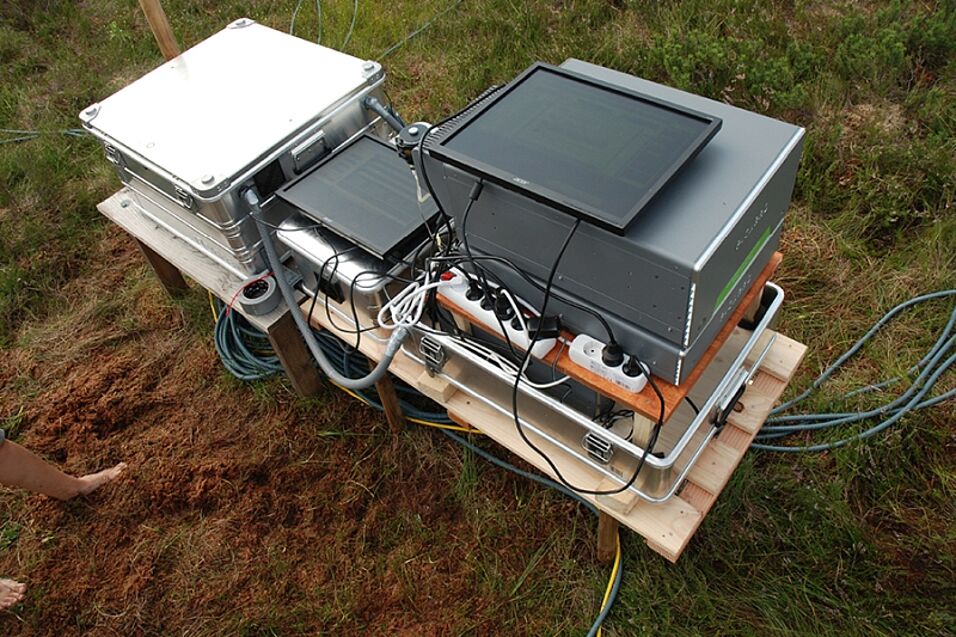The new Core Facility LTWER, which was officially opened at the Department of Geography and Regional Research in October, is devoted to examining the ecosystem functioning of wetlands with a focus on carbon and water cycling in reed belt of Lake Neusiedl and the Alpine ombrotrophic bog Pürgschachen Moor.
Research infrastructure for the analysis of wetland-processes is of great importance for science as well as for society: “Wetlands are the most important carbon sinks in the world and if improperly managed, they can become the most important sources of carbon”, explains Stephan Glatzel, director of the new core facility and professor at the Department of Geography and Spatial Research at the University of Vienna.
Carbon and water cycle
The Core Facility focuses on the study of ecosystem processes and in particular the carbon and water cycle in the reed belt of Lake Neusiedl and the alpine ombrotrophic bog Pürgschachen. Thus, LTWER provides the foundation for a long-term investigation in these well instrumented wetland sites. A mobile measuring instrument for determining the carbon isotope in gases complements the permanent site measurements and provides insights into biogeochemical processes in the carbon cycle.
Long-term environmental and ecosystem research
"The LTWER Core Facility also underlines the contribution of the Faculty of Earth Sciences, Geography and Astronomy and the Department of Geography and Regional Research in the national and international LTER network and in general to environmental and ecosystem research", emphasises LTWER Director Glatzel.
"We are particularly looking forward to successful cooperation within the faculty, the university and beyond", says Andreas Maier, Deputy Head of LTWER. Cooperation and support, however, had already played a major role in the preparation of the project: the Core Facility would not have been possible without the active support of Vice Rector Regina Hitzenberger, Dean Petra Heinz and the head of the Department of Geography and Regional Research at the University of Vienna, explains Maier, but also numerous scientists and supporters of the University of Vienna would have contributed to this: "Our special thanks also go to Manfred Dorninger, Christian Griebler, Leopold Haimberger, Thilo Hofmann, Michael Schagerl, Michael Wagreich, Bernadett Weinzierl and Karin Mayer as well as to the Dean's Office of the Faculty," says the Vice Head of the Department.
Opening ceremony postponed
Unfortunately, the planned opening ceremony had to be postponed until next year due to COVID-19: "We are looking forward to this event next year with our large network of supporters and cooperation partners", says Glatzel.
For more information please visit https://wetlands.univie.ac.at



